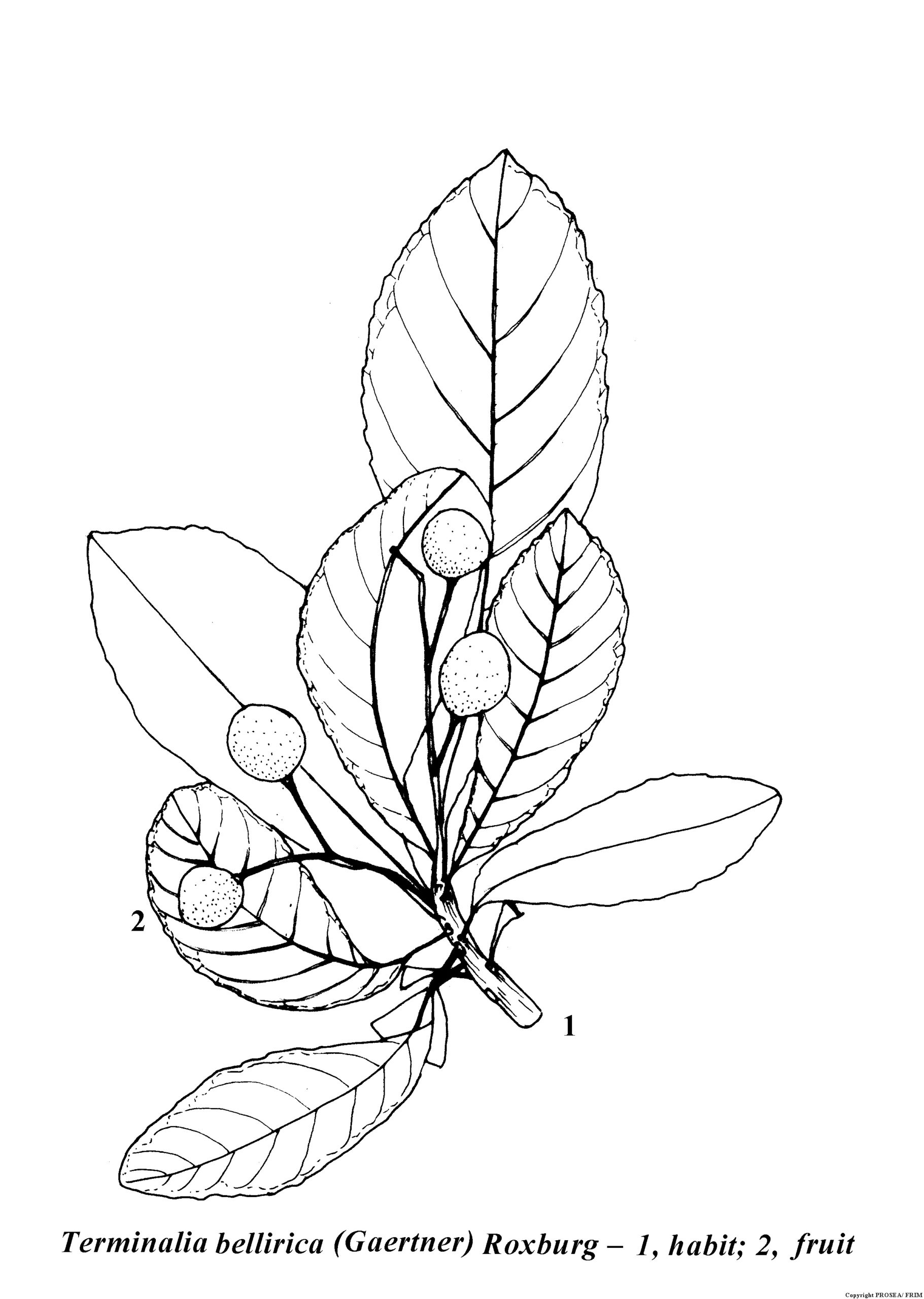Terminalia bellirica (Gaertner) Roxb.
Family
Combretaceae
Synonyms
Terminalia punctata Roth, T. laurinoides Teijsm. & Binnend. ex Miq., T. bellirica var. laurinoides (Teijsm. & Binnend. ex Miq.) Clarke.
Vernacular Names
| Malaysia | jelawai, simar kulihap (Peninsular).Geographical Distributions |
| English | Beleric myrobalan, belliric myrabolan, bedda nut tree. |
| Indonesia | jaha kebo, jaha sapi (Javanese), ulu belu (Sumatra). |
| Burma (Myanmar) | thitsein. |
| Cambodia | srâmâr piphéék. |
| Laos | hèèn, nam kièng dam. |
| Thailand | haen-khao, haen-ton (eastern, northern), samo-phiphek (central). |
| Vietnam | b[af]ng n[uw][ows]c, mung tr[awf]ng, b[oo]ng d[ee]u. |
| French | Myrobalan beleric. |
Geographical Distribution
Terminalia bellirica is distributed from Sri Lanka, India and Nepal through Burma (Myanmar) Indo-China and Thailand towards Peninsular Malaysia, Sumatra, Java, Borneo (Sabah), the Lesser Sunda Islands, central Sulawesi and the Moluccas; rarely cultivated.
Description
T. bellirica is a large briefly deciduous tree can reach up to measure 50 m tall. The bole is branchless for up to measure 20 m, up to measure 300 cm in diametre and with large buttresses. The bark surface is finely longitudinally cracked or fissured, bluish or ash-grey to pale grey-brown in colour while the inner bark is yellowish in colour.
The leaves are broadly elliptical or obovate-elliptical in shape, with a size of measure about 4-18 cm x 2-11 cm, rounded to wedge-shaped base, rufous-sericeous but soon glabrescent and with 6-9 pairs of secondary veins. The secondary and tertiary venation are prominent on both surfaces while the petiole is measuring 2.5-9 cm long.
The flowers are in an axillary spike of measure about 3-15 cm long. The sepal tube is densely sericeous or tomentulose.
The fruit is slightly spherical to broadly ellipsoid in shape, with a size of measure about 2-2.8 cm x 1.8-2.2 cm, densely velutinous or sericeous and with 5 well-marked longitudinal ridges.
Ecology / Cultivation
T. bellirica is fairly common in monsoon forest, mixed deciduous forest or dry deciduous dipterocarp forest, sometimes associated with teak, rarely in evergreen forest, on periodically dry soils, up to 600 m altitude.
Line Drawing / Photograph
Read More
1) Ayuverda
References
- Plant Resources of South-East Asia No. 5 (2): Timber trees: Minor commercial timbers.



